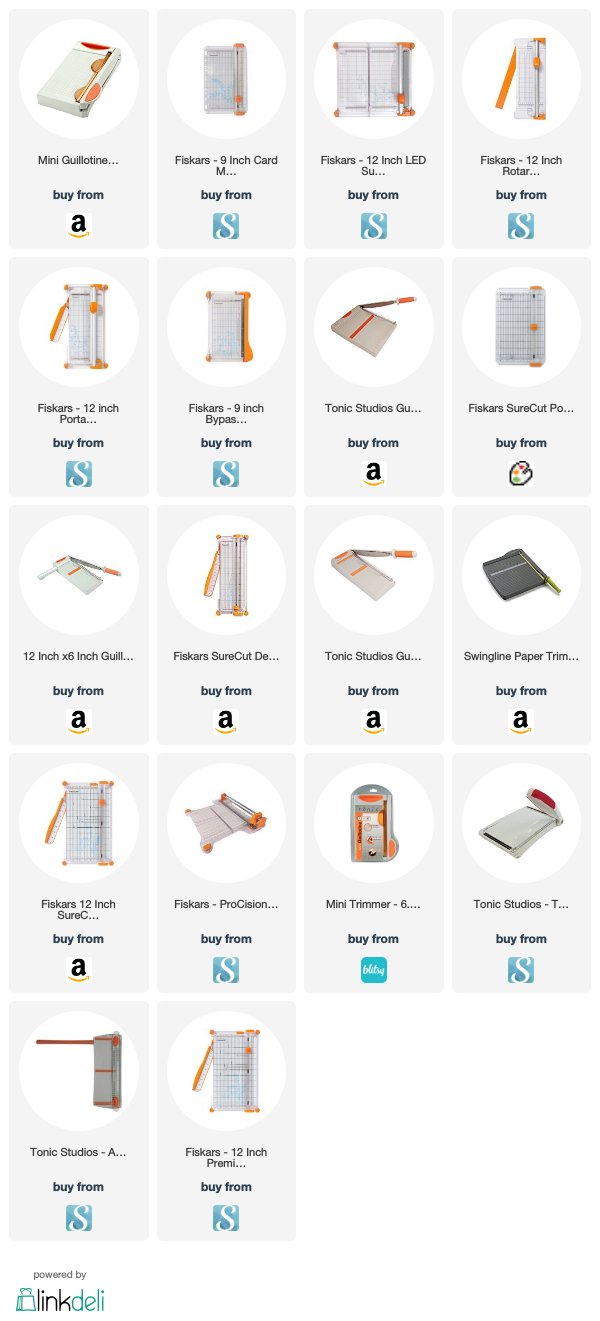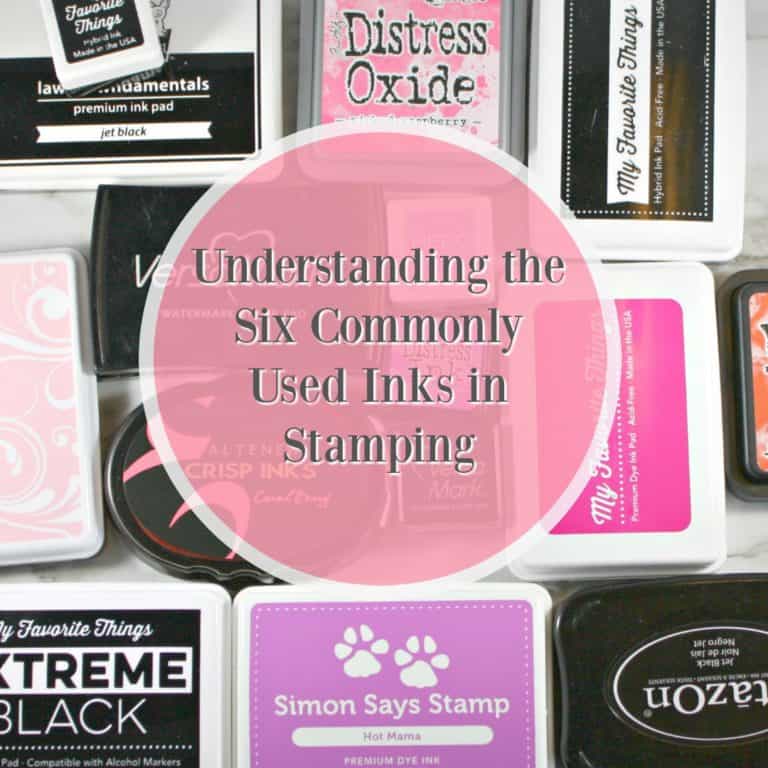Making Sense of the Crazy World of Paper Trimmers
There is an item in the crafting world I have purchased several times over; a paper trimmer. The crazy world of paper trimmers frustrated me daily! Either it didn’t cut straight or it didn’t cut consistently or it didn’t cut at all. And the sheer number of choices! Finally, I found my perfect paper trimmer. Let’s see if I can make some sense of the crazy world of paper trimmers so you can find your perfect paper trimmer.

I have two paper trimmers: a Fiskars 12” Reinforced Paper Trimmer and a Swingline guillotine cutter. I use the Fiskars 12” Reinforced Paper Trimmer to cut single pieces of paper as I’m crafting and it stores away easily since it is 12” long, 6” wide, and very slim. It has a swing arm with a ruler on it to accommodate 12”x12” paper. The arm stores under the base. I use my guillotine cutter to cut bulk items for things like card bases and heavier materials like chipboard. I use 8 ½”x11” paper the most but still have a ton of 12”x12” paper and occasionally need something larger than 5 ½” wide.
Affiliate Disclosure Policy
This post contains affiliate links for your convenience. This means if you make a purchase after clicking a link, I will get a small commission with no additional cost to you as the consumer. Jill Cameron Creations/Jill Lipscomb participates in the Amazon Services LLC Associates Program, an affiliate advertising program designed to provide a means for sites to earn advertising fees by advertising and linking to Amazon.com. For full disclosure policy click here.
What are the most common types of paper trimmers?
Guillotine/ByPass Trimmer – The cutting blade is on a long arm that is pulled down to cut paper.
Guillotine trimmers are very accurate.
- These trimmers can cut through many different materials, not just paper. The thickness of the materials depends on the trimmer.
- A concern with guillotine trimmers is the open, very sharp blade.
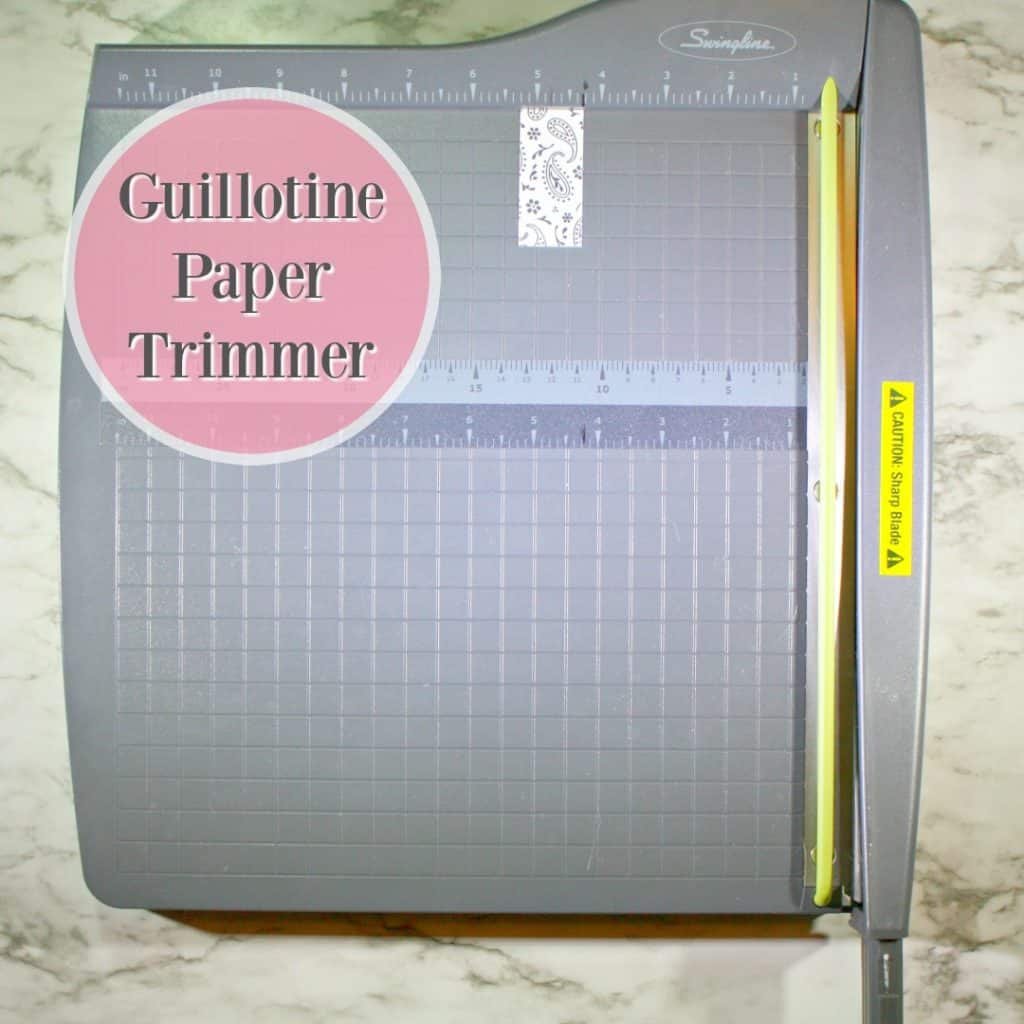
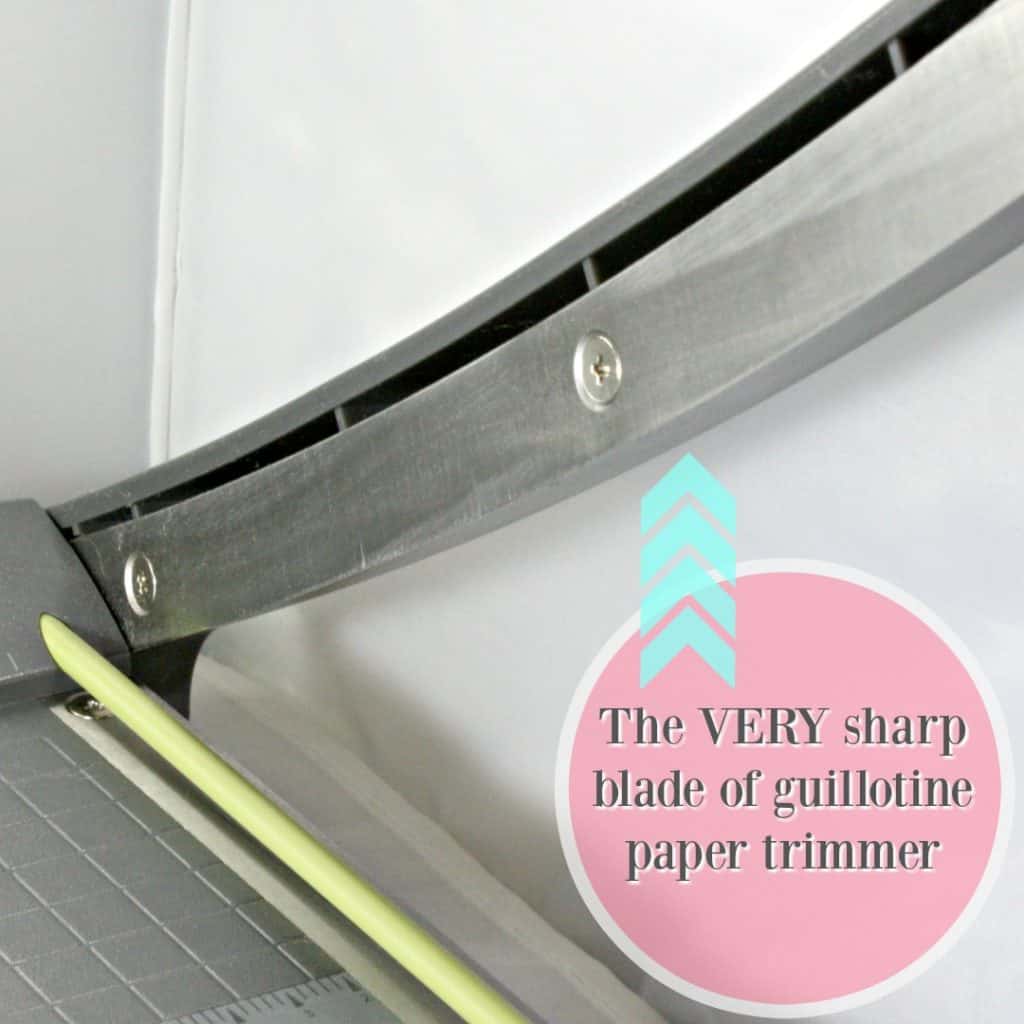
Rotary Trimmer – These trimmers use an encased round blade on a rail. To cut you push down on the blade and push/pull it along a metal rail.
- Rotary trimmers are very accurate.
- They cut through a variety of materials including fabric.
- These trimmers require consistent, even pressure on the blade to cut accurately.
Paper Trimmer – These trimmers use a channel, either metal or plastic, to house a blade that slides back and forth. Paper trimmers in this form are probably the most common trimmers used.
- Easy to use.
- The blades can be replaced easily.
- Paper trimmers are accurate with a little bit of practice.
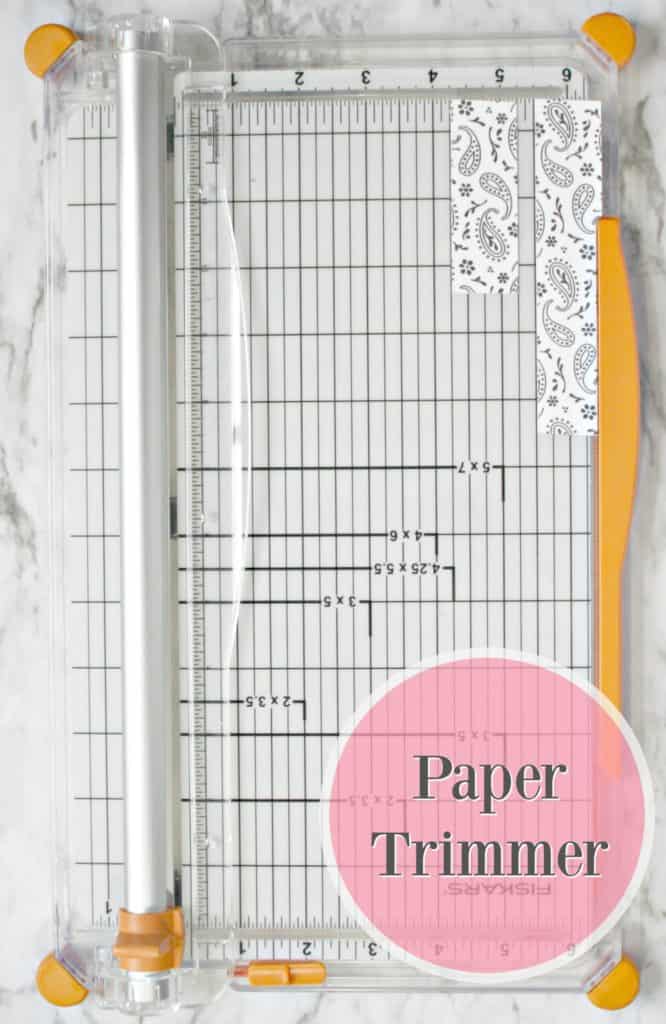
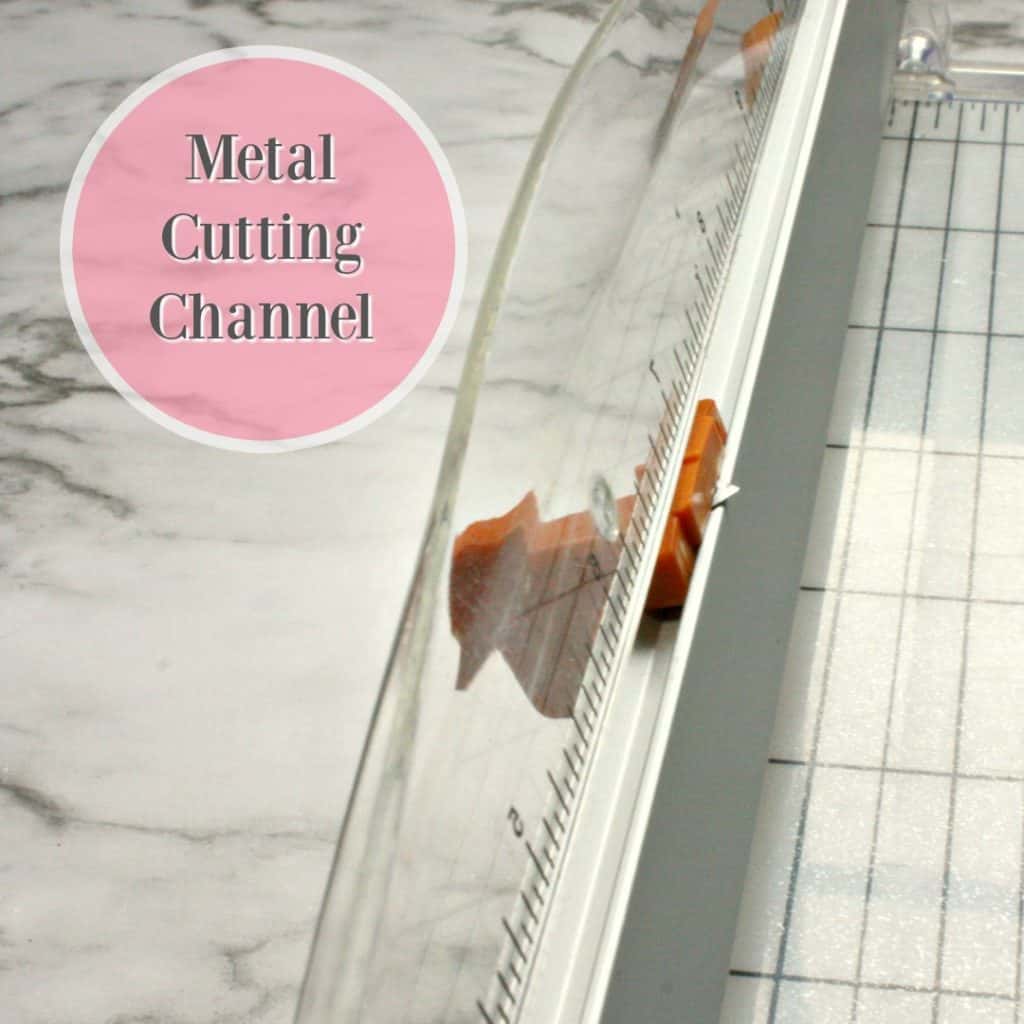
So, what should you look for in a paper trimmer?
- Does it fit your space? Do you have room for a guillotine trimmer or do you need a trimmer that can be stored? There are small footprint guillotine cutters but they are still pretty bulky overall.
- What size paper are you cutting? Look for a paper trimmer that will cut wider than 6″ to accommodate any crafting needs.
- What kind of things are you cutting? Are you only cutting paper or heavy materials? If you are planning on cutting things like burlap or cork then a guillotine cutter would be best.
- Avoid paper trimmers where the blade snaps into a plastic rail. I had several of these through the years and I always wondered why my cuts were crooked. The plastic rails bend in the middle. Look for a metal rail.

- Do you attend crops or crafting events? A travel size trimmer might be best for your needs.
- You don’t have to spend a fortune to buy a good quality paper trimmer; just make sure to purchase replacement blades and use them! A good paper trimmer can cost as little as $25.
- Don’t buy something super expensive just because it’s popular; it may not fit your needs in your craft space.
- Do you have kids in the house? You may want to avoid guillotine cutters. These cutters operate by raising an arm with an extremely sharp blade and bringing it down to shear the paper.
I’ve never had much luck with rotary trimmers, so I can’t really recommend them.
There are so many choices when it comes to paper trimmers. The most important thing to remember when purchasing your paper trimmer is to make sure it fits your needs and works within your budget. There is a paper trimmer out there to fit your needs. Links to various papers trimmers are below.
